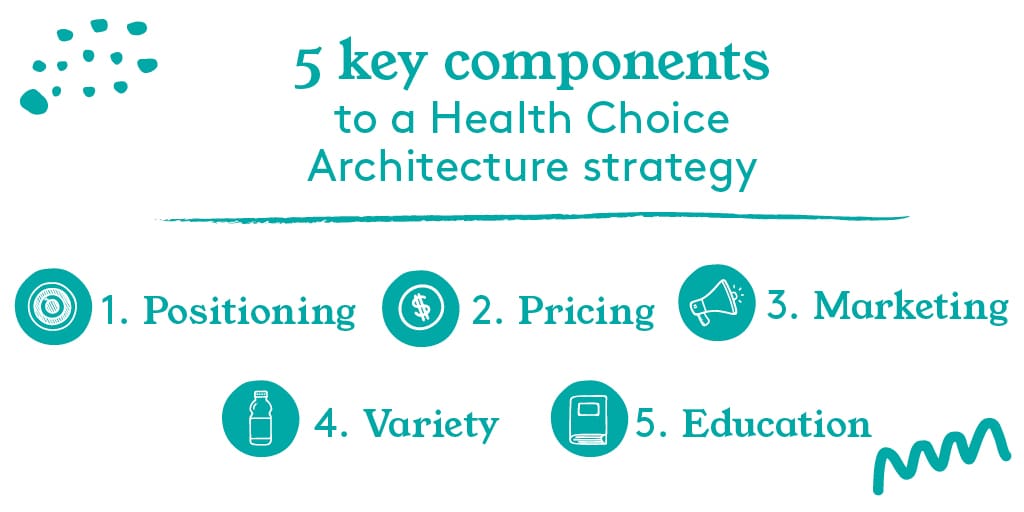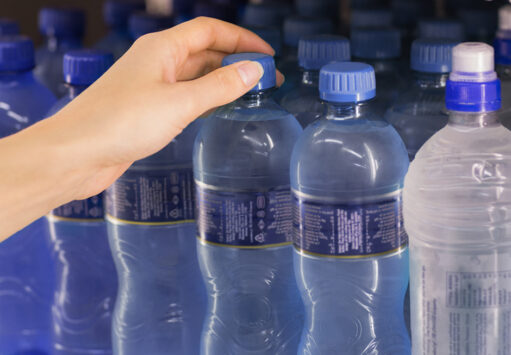5 Keys to Reducing Sugary Drinks in Your Facility
Chronic diseases, rates of diabetes, and obesity are at a critical high in the U.S. Sedentary lifestyles, and unhealthy food options are key factors driving these conditions with sugar-sweetened beverages serving as one of the biggest offenders.
To put things in perspective, one-half of the U.S. population consumes at least one sugary drink a day, and 25 percent of the population consumes more than one, according to Dietary Guidelines for Americans by the U.S. Department of Agriculture. Soda, sweetened fruit drinks, sports drinks, and energy drinks account for nearly half of all sugar consumption in the average American diet.
Providing nutrition education and access to healthier options, particularly beverages, are needed to help drive healthy behaviors and improved outcomes. This is vital for people across the country but is a necessity for healthcare workers. Hospitals should stand as a best practice example by reducing sugar-sweetened beverages and creating healthy habits.
That’s why Lisa Roberson, RDN, L.D., is so passionate about eliminating sugary beverages from people’s diets.
“We have an opportunity to make a real difference in people’s lives,” said Roberson. “Reducing sugary beverages in diets can flip the script on obesity in this country. As a dietitian, that’s exciting. I love being in a place where we are making change happen.”
As a registered dietitian and as National Director of Wellness & Sustainability for Morrison Healthcare, Roberson leads initiatives to educate hospital administrators and find ways to bring healthy food options to patients and hospital staff.
A concept called Healthy Choice Architecture is at the crux of Morrison Healthcare’s strategy to reduce sugary drinks. At a high level, this strategy puts healthy options in front of customers and patients, encouraging them to make better choices. In this case, it uses data and analytics to drive the sale of healthier beverages.
There are five key components to a Health Choice Architecture strategy:
- Positioning
Beverages can be divided into three categories: Best, Better, and Sugary. We want to encourage our visitors to choose items from the Best and Better categories, which are healthier options like water or unsweetened tea.
One of the most effective ways to reduce the impulse to buy sugary beverages is to remove them from eyesight. By positioning water and other Best options at eye level, people are more likely to purchase healthier options. Typically, a beverage cooler would be laid out like this:
- Water and Best category beverages are placed upfront and at eye level.
- Better beverages are placed immediately above or below the Best beverages.
- Sugar-sweetened beverages are placed in the lower third of the cooler
This is a subliminal way to promote healthy beverage consumption. If people want to have sugar-sweetened beverages, they still have the option but will have to put forth more effort to get them.
- Pricing
A pricing strategy is a critical component for effective Choice Architecture implementation. Many hospitals have found success by incentivizing healthy foods for visitors and staff in the café. This can be lowering the cost of healthy foods, or in the case of beverages, lowering the price of water. For instance, creating a 2 for 1 bottled water offer encourages customers to make a healthier choice because of cost.
- Marketing
Marketing materials and promotions are a great opportunity to showcase both the benefit and value of healthy products. Through these campaigns, we can lay the groundwork for behavior changes that will have a lasting impact.
One successful option is bundled promotions. Research indicates more than 24 percent of hot coffee purchasers also buy a bottle of water. Market research also tells us 30 percent of the bottled water sales occur in the morning, and 16 percent come around lunchtime. As a result, bundling coffee and bottled water purchases in the morning has performed well. It drives sales and increased healthy beverage consumption.

- Variety
Even with a robust Healthy Choice Architecture strategy, it is challenging to change behaviors. In situations where staff and guests have been reluctant to embrace healthy beverage options, we’ve found success by increasing variety.
People want choice. Flavored water and stocking new brands and products will drive experimentation, leading to increased consumption and potentially a change in behavior.
- Education
It’s important to educate patients, families, and staff about the dangers of sugary beverages. This comes in two forms: public health campaigns and healthcare professional guidance.
Many campaigns are running to get families to reconsider their drink choices, particularly in the pediatric care space. The CDC runs a campaign called Rethink Your Drink, which looks to educate consumers about how making a conscious decision about beverages can change your health outlook.
But the most beneficial way to get information across is through one-on-one conversations with healthcare providers. Many of these are happening already. Healthcare professionals are the first line of outreach and can have the greatest impact by encouraging healthy behaviors and educating patients about the dangers of sugar-sweetened beverages.
The reduction of sugary drinks can help Americans reduce calorie intake, improve diet quality, and decrease their risk of obesity. By taking a deliberate approach to the health of patients, families, and staff, we can have a drastic impact on healthcare outcomes. At the heart of this effort lies a robust Healthy Choice Architecture strategy, which has the power to change behaviors and create a healthier population.

